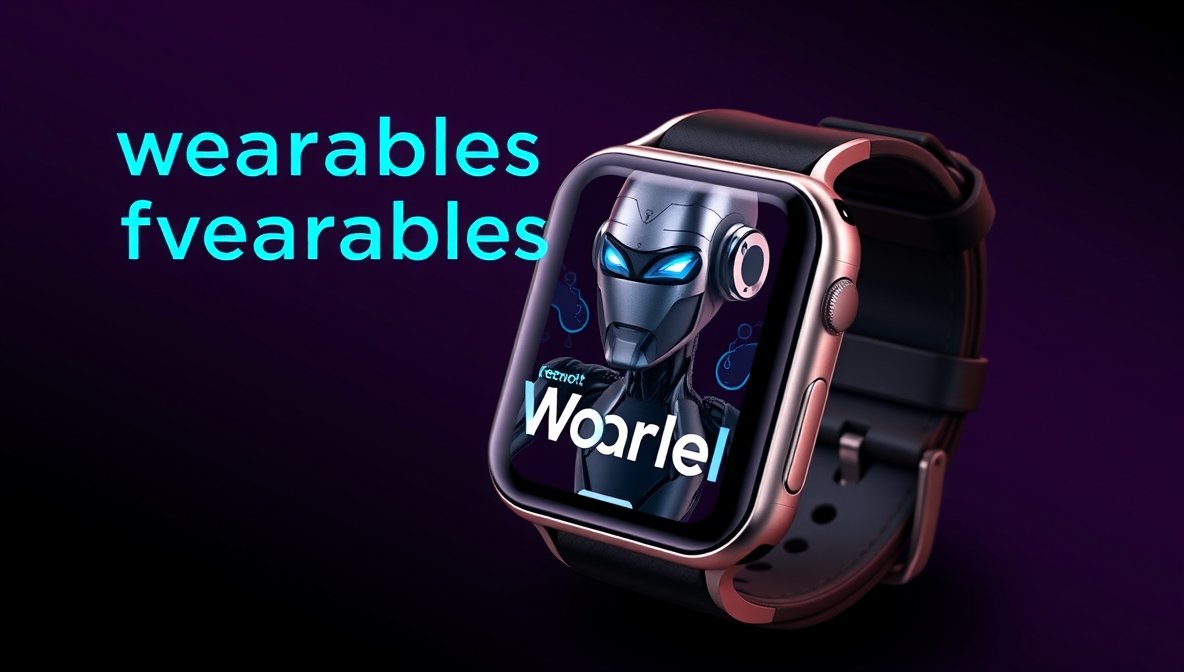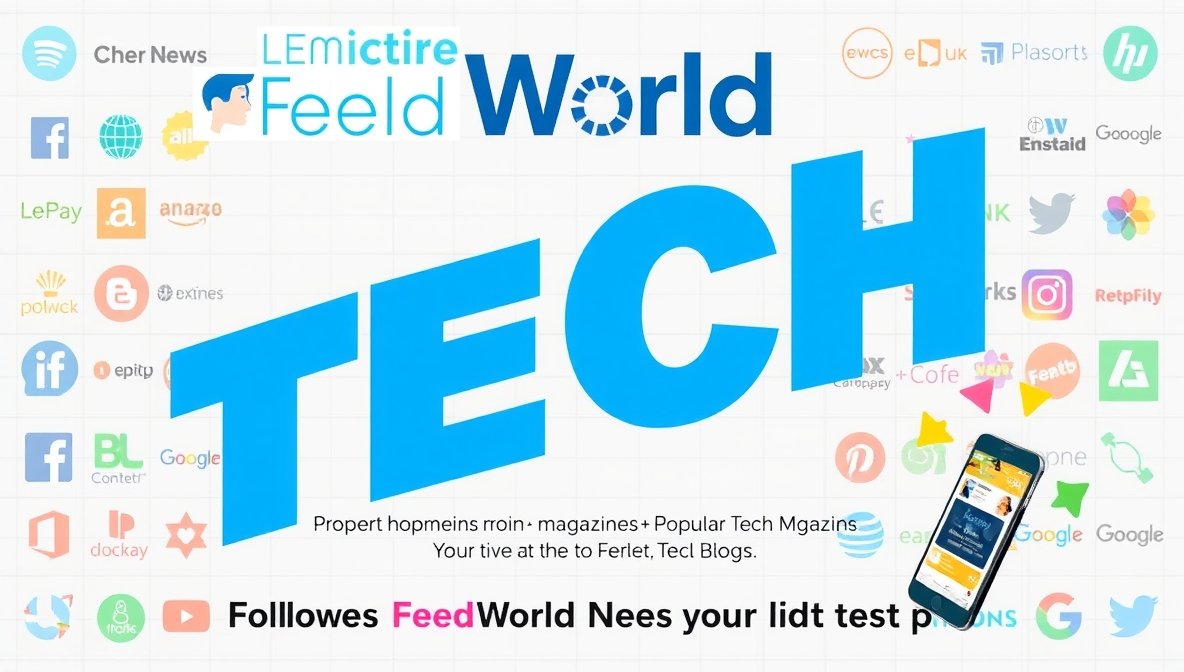wearables feedworldtech has become a defining term in the modern era of innovation, symbolizing the fusion of technology with the human body. As people increasingly depend on digital devices for health, convenience, and connectivity, the world of wearables continues to expand. From smartwatches to fitness trackers, and even smart clothing, wearable technology is reshaping how humans interact with their surroundings and manage their personal data. The evolution of this field reflects the growing desire for a seamless relationship between people and machines.
The Rise of Wearable Technology
Over the past decade, wearable technology has transitioned from a futuristic concept to a daily necessity. Early devices focused primarily on tracking basic health metrics such as heart rate, steps, and calories burned. However, wearables feedworldtech has transformed this landscape by enabling complex integrations like ECG monitoring, oxygen saturation tracking, and AI-based health predictions. The expansion of these technologies has made wearables an indispensable part of everyday life for millions around the world.
The rise of smart devices was initially dominated by fitness enthusiasts and tech-savvy users. Today, wearables cater to a far broader audience. People use them to receive notifications, make payments, and even control other smart devices in their homes. This shift reflects a larger societal transformation — one where digital ecosystems extend beyond smartphones into every aspect of human experience.
Evolution Beyond Fitness
When wearables first emerged, they were primarily associated with fitness tracking. Step counters and sleep monitors were the standard features that attracted consumers. However, wearables feedworldtech has expanded these possibilities by merging artificial intelligence, data analytics, and cloud computing to provide deeper insights into human behavior. These technologies allow devices to predict potential health issues, offer customized fitness plans, and even guide users toward better mental wellness.
Wearable devices now have the capacity to detect irregular heart rhythms, measure stress levels, and monitor hydration. This health-centric approach has turned wearables into vital tools in preventive medicine. In Malaysia and other tech-forward nations, healthcare systems have begun integrating wearable data into patient records, allowing doctors to access real-time information and make more informed decisions. This kind of transformation marks the beginning of a new digital healthcare ecosystem.
Design Meets Functionality
One of the reasons wearables have gained such immense popularity is their aesthetic evolution. Early devices often sacrificed style for utility, but modern wearables are blending fashion with technology. The trend of wearables feedworldtech embraces minimalistic design principles, making gadgets both attractive and functional. High-end materials, customizable straps, and sleek interfaces ensure that users no longer have to choose between beauty and practicality.
Leading brands have collaborated with fashion designers to introduce collections that appeal to diverse audiences. These partnerships emphasize how technology can enhance self-expression. The fusion of fashion and functionality ensures wearables complement both personal style and digital lifestyles, redefining what it means to wear technology.
The Role of AI and Machine Learning
Artificial intelligence has played a significant role in shaping the next generation of wearables. Through AI algorithms, devices can analyze vast amounts of data and provide tailored insights. wearables feedworldtech demonstrates how predictive analytics can anticipate health risks before they become serious. For instance, AI-driven wearables can detect patterns in sleeping habits, alerting users to potential sleep disorders.
Machine learning enhances personalization by studying user preferences and behaviors. Over time, devices adapt to individual needs, recommending specific workouts, relaxation techniques, or nutrition plans. This adaptability has turned wearables from passive monitors into proactive lifestyle companions, empowering users to make informed choices about their wellbeing.

Data Privacy and Ethical Concerns
While the benefits of wearable technology are undeniable, privacy concerns remain at the forefront of the discussion. These devices collect massive amounts of personal data — from location tracking to biometric details. wearables feedworldtech brings attention to the importance of ethical data management and user consent. Companies must establish transparent policies to ensure that the data collected through wearables remains secure and used responsibly.
Governments and tech organizations have started to implement stricter regulations regarding how health and fitness data is stored and shared. Users are also becoming more aware of how their digital footprints can be exploited. Therefore, the success of wearables depends not only on innovation but also on maintaining public trust. tech news feedworldtech
Integration with Smart Ecosystems
The concept of a connected lifestyle revolves around seamless integration between devices. Smart homes, electric vehicles, and even virtual assistants rely on data sharing and synchronization. wearables feedworldtech aligns perfectly with this idea by bridging the gap between human activity and digital control systems. For instance, smartwatches can now control home lighting, adjust thermostats, and even unlock doors with a simple gesture.
As the Internet of Things (IoT) expands, wearables act as central nodes within this ecosystem. They collect data that other devices can interpret and act upon. The future promises even more advanced integrations, where wearables interact with autonomous vehicles, smart cities, and AI-driven healthcare networks. This interconnectivity will redefine convenience and efficiency in ways previously unimaginable.
The Business Impact of Wearables
The wearable technology market is not just about convenience — it’s also a multibillion-dollar industry. Global demand has driven tech companies to invest heavily in research and innovation. According to market analyses, the wearable sector is expected to continue its exponential growth over the next decade. wearables feedworldtech encapsulates the economic potential of this industry, emphasizing how businesses can leverage wearable data to improve consumer engagement and product development.
Companies use insights from wearables to design marketing strategies that align with customer behavior. For instance, fitness brands analyze activity data to recommend products, while insurance companies offer discounts to customers who maintain healthy lifestyles through wearable tracking. These integrations are shaping a new era of data-driven business.
Health and Wellness Revolution
Wearables are playing a major role in the health and wellness revolution. They empower individuals to take charge of their physical and mental wellbeing by providing accurate, real-time feedback. wearables feedworldtech enhances this process through smarter algorithms and improved sensor technology. Wearables no longer just track — they advise, remind, and even warn users when something seems off.
Hospitals and clinics are incorporating wearable data into telemedicine systems. Patients recovering from surgeries can be monitored remotely, reducing hospital visits and improving outcomes. Mental health apps are also gaining traction, with wearables detecting stress patterns and suggesting relaxation exercises. This personalized healthcare model is transforming medicine from a reactive to a proactive practice.
The Social Dimension of Wearables
Beyond personal use, wearables have also influenced social interactions and community engagement. Fitness competitions, social sharing of achievements, and group challenges encourage motivation and accountability. wearables feedworldtech supports this interconnectedness by fostering networks where data becomes a form of communication. People now share their health goals, achievements, and progress online, forming communities built on mutual support.
Social influence has also driven wearable adoption among younger demographics. For many users, wearables are not just tools but symbols of identity — representing a tech-savvy, health-conscious, and connected lifestyle. The cultural impact of these devices cannot be understated, as they redefine how technology becomes part of daily expression.
Sustainability and Environmental Considerations
Sustainability has emerged as a key factor in modern technology. Consumers are increasingly concerned about the environmental footprint of their devices. wearables feedworldtech addresses this challenge by promoting eco-friendly materials, longer-lasting batteries, and recyclable components. Manufacturers are also adopting ethical production practices, reducing waste, and prioritizing renewable energy sources during manufacturing.
The push toward sustainable design has given rise to innovative materials such as biodegradable polymers and solar-powered sensors. Wearables built with these technologies reduce the need for frequent replacements, lowering environmental impact. This fusion of sustainability and technology not only benefits the planet but also appeals to the values of socially conscious consumers.
Education and Training Applications
Wearables are also finding their way into education and professional training environments. By integrating augmented reality (AR) and virtual reality (VR), these devices create immersive learning experiences. wearables feedworldtech enhances educational processes by enabling hands-free interaction and real-time feedback. Students can visualize complex concepts, while professionals can simulate real-world tasks in controlled environments.
For example, medical trainees can use AR headsets to practice surgeries, while engineering students can explore 3D models of machines. In workplaces, wearables provide safety alerts and performance analytics, reducing risks and improving efficiency. These practical applications demonstrate how wearable technology extends far beyond entertainment and fitness.
Sports and Performance Enhancement
Athletes and sports enthusiasts have embraced wearables as essential performance tools. From tracking speed and stamina to analyzing muscle activity, these devices offer insights that were once available only to elite professionals. wearables feedworldtech pushes this boundary further by integrating AI-driven performance analysis and real-time coaching feedback. Sports teams now use wearable data to optimize training regimens, prevent injuries, and enhance overall performance.
Even amateur athletes can benefit from the same technology once reserved for professionals. With personalized data available at their fingertips, users can fine-tune every aspect of their training routines. This democratization of sports technology is one of the key factors behind the global wearable boom.
The Future of Wearable Innovation
Looking ahead, the potential for wearable technology appears limitless. From brain-computer interfaces to smart textiles, innovation continues to accelerate. wearables feedworldtech captures the essence of this transformation, where the boundaries between human biology and digital systems blur. Researchers are exploring implantable sensors that can monitor blood glucose levels continuously, contact lenses that analyze tears for medical diagnostics, and even neural wearables that translate thought into digital commands.
These futuristic concepts may soon become mainstream as miniaturization and connectivity improve. Wearables could soon become invisible — woven into fabrics, implanted under the skin, or integrated into everyday accessories. The ultimate goal is to achieve seamless digital-human integration that enhances comfort, performance, and overall quality of life.
Challenges Ahead
Despite rapid progress, the wearable technology sector still faces significant challenges. Battery life, device accuracy, and data privacy are ongoing concerns. wearables feedworldtech highlights these obstacles while pointing toward innovative solutions. Developers are working on ultra-efficient batteries, energy harvesting technologies, and advanced sensors that deliver precise readings under all conditions.
Another major challenge is ensuring compatibility across platforms. As the ecosystem of devices expands, maintaining interoperability becomes crucial. Consumers expect their wearables to integrate smoothly with smartphones, laptops, and cloud-based services. The industry’s ability to meet these expectations will determine the long-term success of wearable innovation.
Cultural Acceptance and Global Growth
Wearable technology adoption varies across regions, influenced by culture, economy, and lifestyle. In developed nations, consumers view wearables as lifestyle enhancers, while in developing regions, they are becoming tools for essential healthcare monitoring. wearables feedworldtech unites these different perspectives by showcasing how wearable innovation adapts to local needs.
Countries in Asia, including Malaysia, have embraced wearable tech as part of their digital transformation efforts. Government initiatives, tech startups, and healthcare organizations collaborate to develop affordable and accessible wearables for the public. This inclusive approach ensures that the benefits of technology reach a wider population, bridging the digital divide.

Conclusion: A New Era of Connection
The journey of wearable technology reflects humanity’s constant desire to improve life through innovation. From fitness tracking to advanced healthcare, education, and environmental sustainability, wearables continue to expand their role in society. wearables feedworldtech symbolizes this evolution — a term that encompasses the progress, challenges, and future potential of a technology that merges seamlessly with human experience.
As artificial intelligence, sustainability, and connectivity continue to advance, the impact of wearables will only deepen. The next generation of these devices will not just record data but enhance human potential, making technology an intrinsic part of personal and collective growth. In this new era, wearables are not merely accessories — they are extensions of who we are, shaping the future of how we live, work, and connect.



